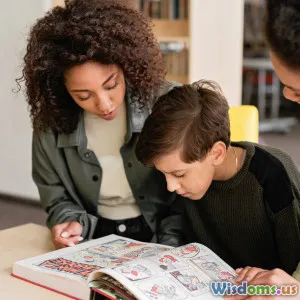
Innovative Teaching Techniques for Modern Classrooms
5 min read Explore cutting-edge teaching techniques that engage students and enhance learning in today's classrooms. (0 Reviews)
Innovative Teaching Techniques for Modern Classrooms
In today's rapidly changing educational landscape, traditional teaching methods are increasingly being supplemented or replaced by innovative techniques that cater to the diverse needs of modern learners. Educators are now leveraging technology, collaborative learning models, and creative instructional strategies to enhance student engagement and improve learning outcomes. This article explores several innovative teaching techniques that are transforming classrooms across the globe.
1. Flipped Classroom Model
The flipped classroom model is a revolutionary approach where traditional lecture and homework elements are reversed. In this model, students are introduced to content at home through video lectures or reading materials, allowing them to engage with the material at their own pace. Class time is then dedicated to hands-on activities, discussions, and collaborative projects. This approach encourages active learning and provides ample opportunities for teachers to offer personalized support.
Example in Practice
A high school mathematics teacher might assign a series of video tutorials on algebra concepts for students to watch at home. During class, instead of lecturing, the teacher facilitates group work where students solve complex problems together, allowing for immediate feedback and peer learning.
2. Gamification
Gamification integrates game-like elements into the learning process to make education more engaging and motivating. By incorporating points, badges, and leaderboards, educators can create a fun and competitive environment that encourages students to participate actively.
Example in Practice
A language arts teacher might use a gamified reading program where students earn points for completing books, writing reviews, or participating in discussions. The points can lead to rewards, fostering a love for reading while simultaneously enhancing literacy skills.
3. Project-Based Learning (PBL)
Project-Based Learning is an instructional approach where students gain knowledge and skills by investigating and responding to a complex question, problem, or challenge. PBL encourages critical thinking, creativity, and collaboration, allowing students to take ownership of their learning.
Example in Practice
An environmental science class could embark on a project to design a sustainable garden. Students would research local flora, collaborate with community experts, and ultimately present their garden design, integrating science, math, and art into a cohesive learning experience.
4. Cooperative Learning
Cooperative learning is a strategy where small groups of students work together to achieve a common goal, fostering collaboration and communication skills. This approach not only enhances learning but also helps develop social skills and teamwork.
Example in Practice
In a history class, students might work in groups to create presentations on different historical events. Each group member takes on a specific role (researcher, presenter, designer), allowing for a division of labor that enhances engagement and learning.
5. Technology-Enhanced Learning
With the rise of digital tools and resources, technology-enhanced learning has become a cornerstone of modern education. Tools like interactive whiteboards, educational apps, and online platforms provide students with diverse ways to access content and demonstrate their understanding.
Example in Practice
A science teacher could use simulation software to allow students to conduct virtual experiments, providing a safe and controlled environment for exploration. This approach not only enhances understanding but also caters to various learning styles.
Conclusion
The shift towards innovative teaching techniques reflects the need for education to evolve and meet the demands of the 21st century. By implementing strategies like the flipped classroom, gamification, project-based learning, cooperative learning, and technology-enhanced learning, educators can create dynamic and engaging learning environments that prepare students for future challenges. As we look ahead, embracing these innovative approaches will be essential in fostering a generation of critical thinkers, problem solvers, and lifelong learners.
Rate the Post
User Reviews
Popular Posts





















